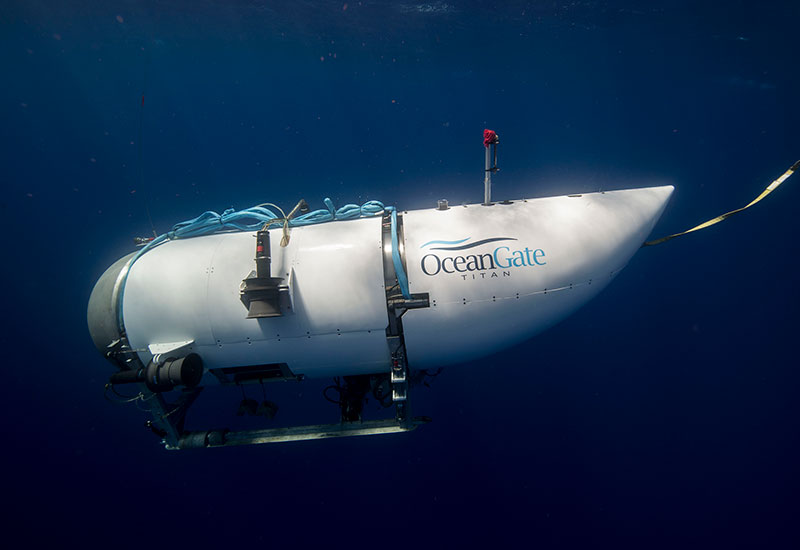Everyone across the world has been on the edge of their seat, as massive search and rescue efforts are underway for the missing Titanic submersible and five people lost with it.
On Sunday, June 18th, the submersible ‘Titan’, designed specifically for exploring the wreckage site of the RMS Titanic, vanished under mysterious circumstances – losing contact with the research vessel Polar Prince about an hour and 45 minutes into its dive. Search authorities estimate that the sub has fewer than 30 hours of oxygen left – meaning supplies will run out by around Thursday afternoon.
The submersible was a tourist expedition by a private firm, OceanGate, which is exploring all options to get the crew back safely, along with government agencies who have joined the rescue operation. Among the five people on board the Titan, there are four people so far whose identities we know – Hamish Harding, a 58-year-old British businessman and explorer, British businessman Shahzada Dawood, 48, and his son, Suleman Dawood, 19, and 77-year-old French explorer Paul-Henry Nargeolet.
According to internal e-mail updates sent by the Department of Homeland Security’s National Operations Center obtained by Rolling Stone, a Canadian aircraft detected “banging” in the search area hours ago, providing some hope after multiple failed attempts. The circumstances surrounding the submersible’s disappearance remain shrouded in mystery, fueling speculation and intrigue. As the world waits for new updates about the rescue, new details uncovered about the underwater tour have left everyone scratching their heads.
OceanGate Expeditions charges guests $250,000 for a place on its eight-day expedition to see the famous wreck, which sits 3,800m beneath the surface at the bottom of the Atlantic. The site is about 600km off the coast of Newfoundland, and lies in two parts, with the bow and the stern separated by about 800m. A huge debris field surrounds the broken vessel. A full dive to the wreck, including the descent and ascent, reportedly takes eight hours. Each expedition lasts eight days, according to OceanGate, and each dive is has a scientific objective, including studying the wreck’s decay. The inaugural dive took place in 2021, according to the company’s website.
The Sun interviewed Chris Brown, a 61-year-old multi-millionaire who was meant to be on the missing sub but backed out last minute over fears it was “cutting too many corners”. Brown and his friend Harding, who ended up going, had paid a $10,000 deposit all the way back in 2016 when OceanGate was still developing the sub. But over time he grew alarmed when he saw how they had made the 21-foot Titan submersible of off-the-shelf components. “I found out they used old scaffolding poles for the sub’s ballast — and its controls were based on computer game-style controllers,” the shocked would-be explorer told the UK paper. According to multiple sources, the sub’s sole controller was a 40$ gaming console first made in 2010. Now people are accusing OceanGate and its CEO of downplaying the sub’s dangers.
The accident on the #TitanicTour is a glaring demonstration of how luxury tourism, disaster tourism and insatiable appetites for exclusive experiences culminate in tragedy.
The path to such dangerous and morally bankrupt experiences are unpacked in #50DarkDestinations
— 50 Dark Destinations (@50DarkDest) June 20, 2023
One aspect of ethical concern is the potential impact on fragile underwater ecosystems. We must conduct deep-sea exploration, including visits to historic wreck sites like the Titanic, with utmost care to minimize disturbance to marine life and the delicate balance of underwater habitats. Strict guidelines and protocols should be in place to ensure that visitors do not disrupt or damage the surrounding environment.
On the other hand, many argue that expeditions like this should be illegal – accusing OceanGate of capitalizing on ‘tragedy tourism’.
Is it not disrespectful to turn the literal resting place of The Titanic and the many people who died of the tragedy into a tourist destination?
Same goes for grim tourism everywhere, Pompeii being another, but at least that has the benefit of being many many centuries removed.
— Tony Stonk ™ (@DickTugging) June 21, 2023
The entire ordeal has also sparked broader discussions about the ethics and safety protocols of extreme tourism, particularly in the context of deep-sea exploration. The quest for unique and thrilling experiences has led to the rise of the extreme tourism industry, with individuals venturing into uncharted territories in pursuit of adventure – but where do we draw the line?





